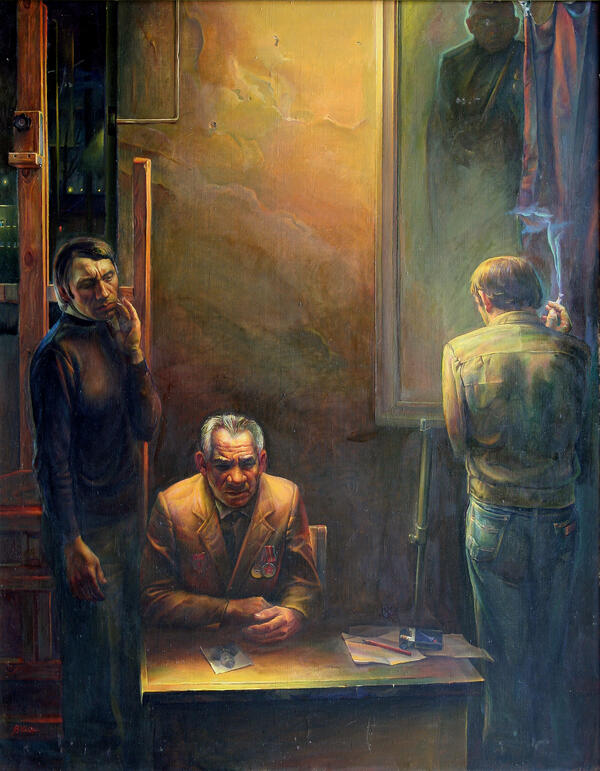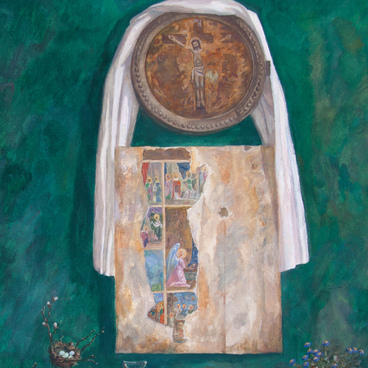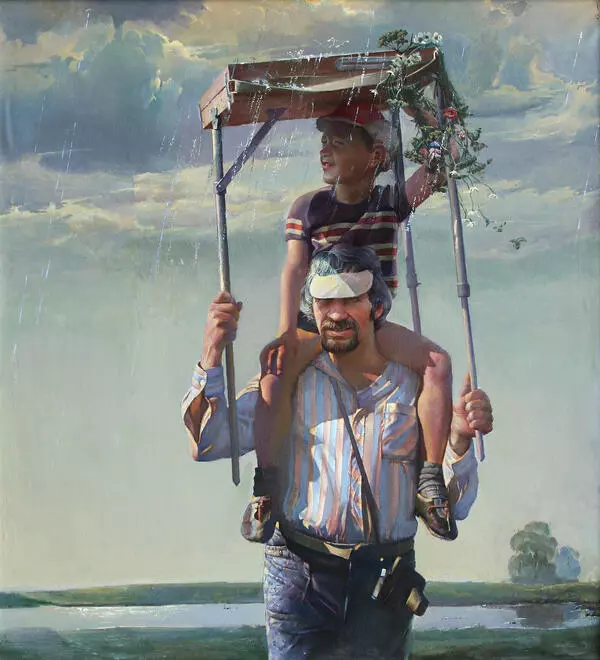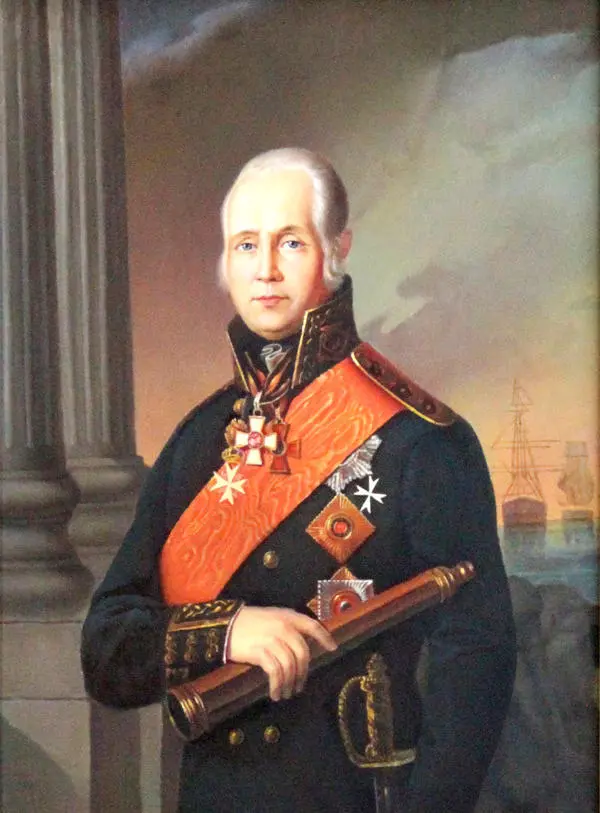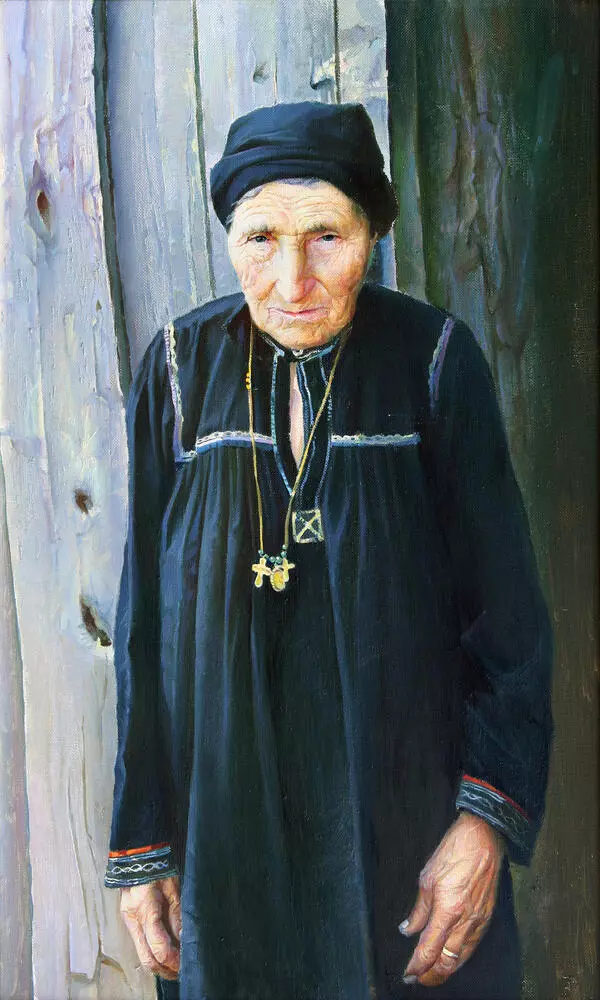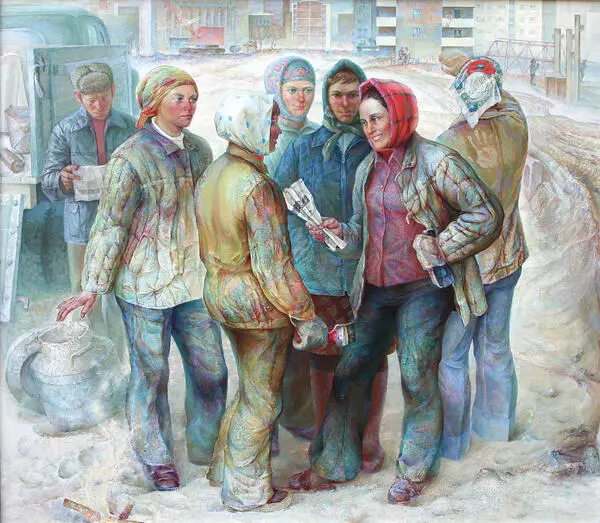In the last third of the 20th century, the Russian art is faced with the task of creating more intimate images. The brothers Alexander and Vladimir Shadrin explore the moral foundations of life, strive to comprehend human existence and reveal the connections with the endless chain of generations. They particularly focus on the themes of family, origins, memory, and history. All these themes are concentrated in the painting “Our Father”. The work combines different genres: it is a thematic painting, a group portrait, and a self-portrait. The artists turn to moral and historical shrines, examine the ties between generations in the family, and highlight the memory of the Great Patriotic War.
The main character of the picture is the father of the Shadrin brothers, a veteran of the Great Patriotic War. He is the connecting thread of memory between the modern days and the historical past. His sons take the baton of memory from him. They seem to become witnesses to the events of the distant wartime, because any person is part of history, and the fate of their father is their own fate.
In their works, Alexander and Vladimir Shadrin seek to pass this memory onto their descendants. In the workshop, where the father sits at a table with a wartime photograph and a painting of a soldier stands on an easel, everything is permeated with memories and thoughts about the war, about human fate and the Motherland.
In this painting, several layers of time co-exist and evoke many associations. These layers are conveyed in the real and “meta-real” planes. The empty wall of the workshop with cracks and missing bits of plaster is likened to ancient parchment. In the swirling shadows, one can see the reflections of explosions on the battlefields. From above, a stream of light descends on the father and his sons, blessing the memory of the dead.
Behind the open window of the workshop, we see the lights of the night city — the true reality of the artists. The “meta-real” plane is created with the help of a traditional composition based on a plot, in which the artistic tradition of Old Russian icon painting is reinterpreted.
The correlation of the temporal and the eternal, human memory and modernity forces us to perceive this work as a testimony to the continuous renewal of life, where the past, present and future exist contemporaneous. The artists turn to profound and symbolic images, reflecting on the place of people in the modern world.
The main character of the picture is the father of the Shadrin brothers, a veteran of the Great Patriotic War. He is the connecting thread of memory between the modern days and the historical past. His sons take the baton of memory from him. They seem to become witnesses to the events of the distant wartime, because any person is part of history, and the fate of their father is their own fate.
In their works, Alexander and Vladimir Shadrin seek to pass this memory onto their descendants. In the workshop, where the father sits at a table with a wartime photograph and a painting of a soldier stands on an easel, everything is permeated with memories and thoughts about the war, about human fate and the Motherland.
In this painting, several layers of time co-exist and evoke many associations. These layers are conveyed in the real and “meta-real” planes. The empty wall of the workshop with cracks and missing bits of plaster is likened to ancient parchment. In the swirling shadows, one can see the reflections of explosions on the battlefields. From above, a stream of light descends on the father and his sons, blessing the memory of the dead.
Behind the open window of the workshop, we see the lights of the night city — the true reality of the artists. The “meta-real” plane is created with the help of a traditional composition based on a plot, in which the artistic tradition of Old Russian icon painting is reinterpreted.
The correlation of the temporal and the eternal, human memory and modernity forces us to perceive this work as a testimony to the continuous renewal of life, where the past, present and future exist contemporaneous. The artists turn to profound and symbolic images, reflecting on the place of people in the modern world.

